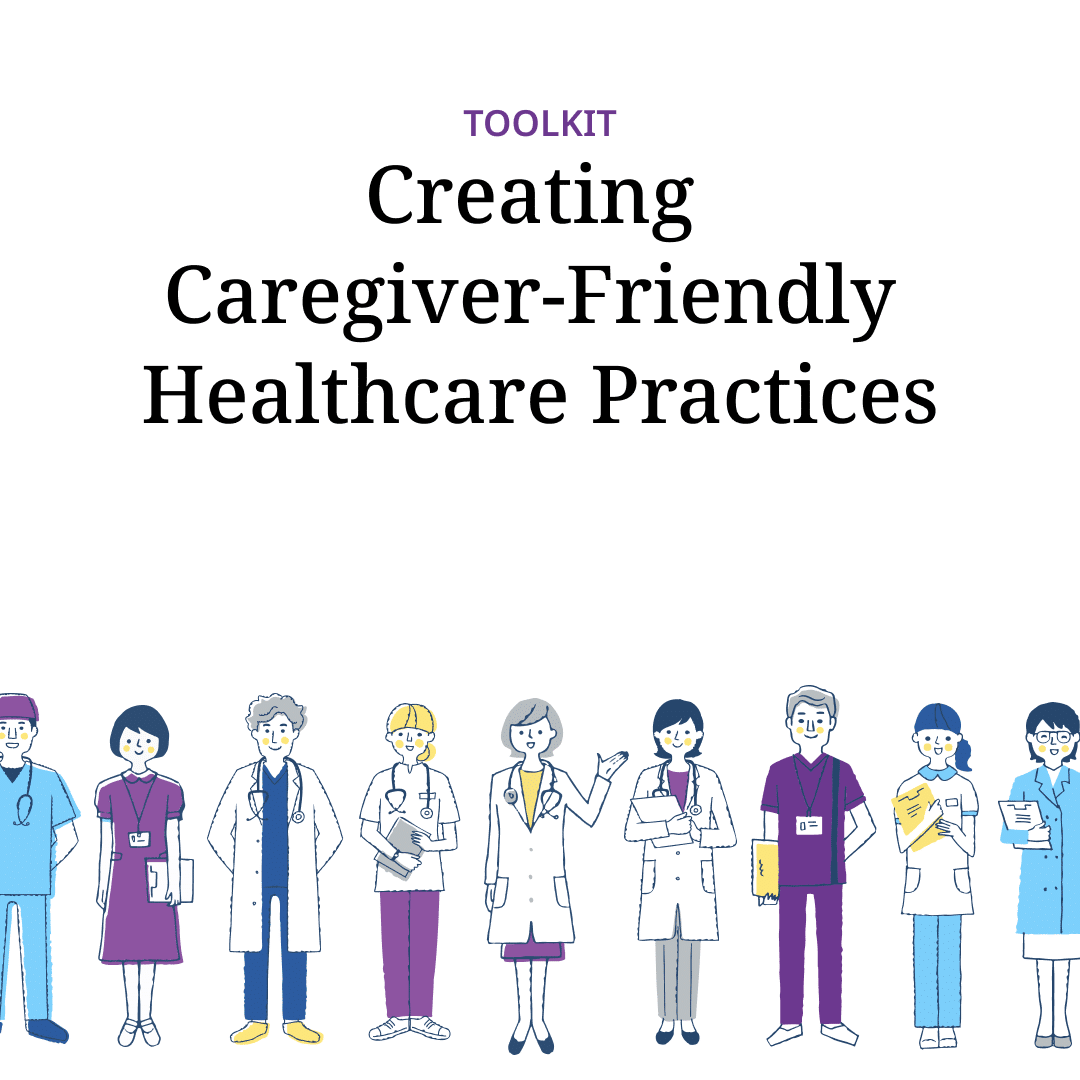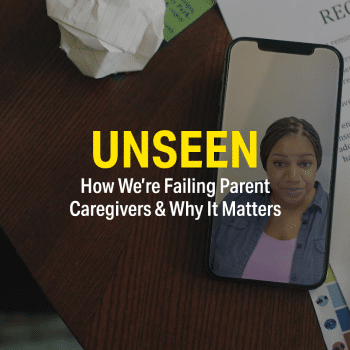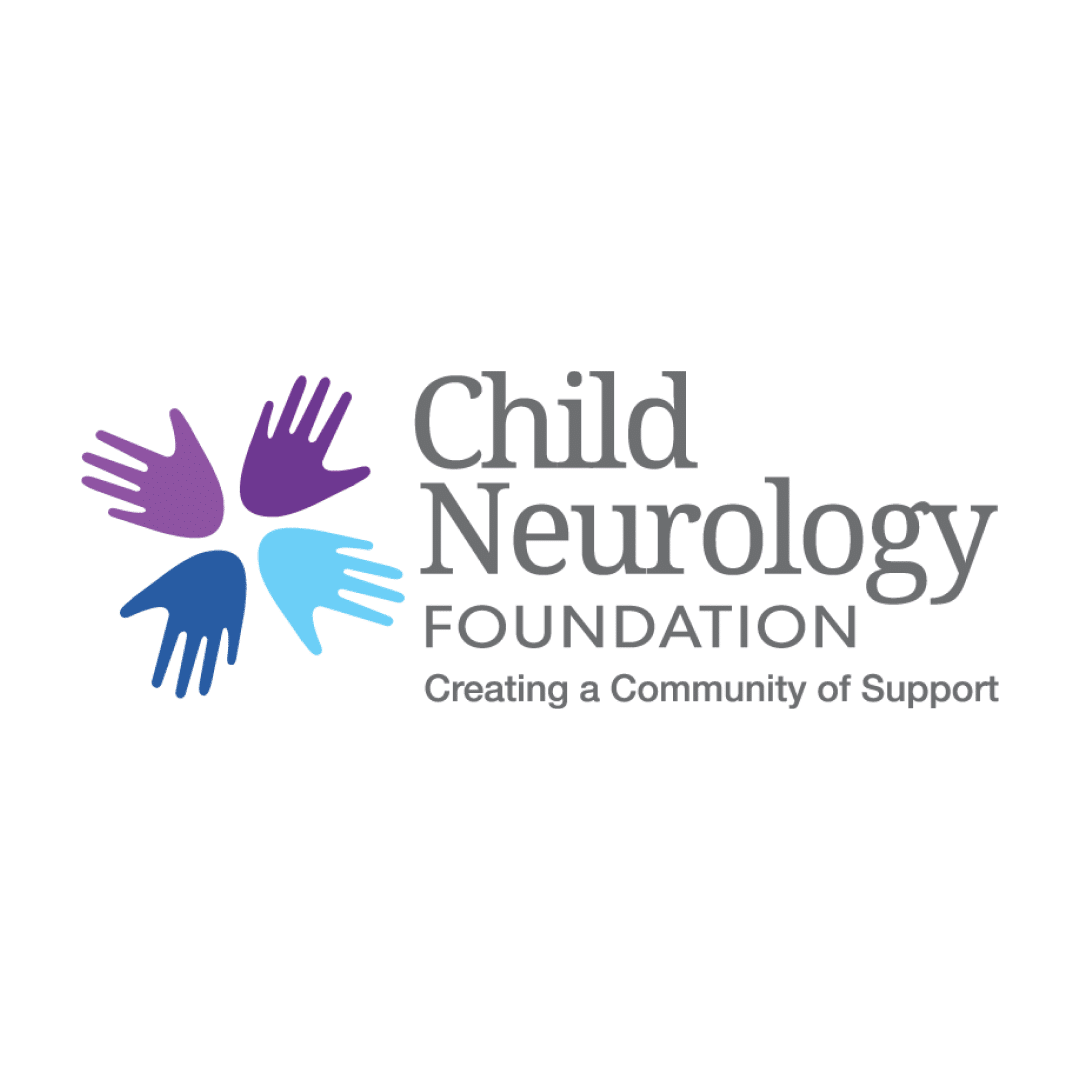
Explore the Caregiver-Friendly Healthcare Practices Toolkit
Learn how healthcare providers can improve outcomes by recognizing and equipping caregivers.
Caregiver-Friendly Healthcare Practices Toolkit
Created in partnership with

Nobody wants to be the bearer of bad news. For healthcare clinicians, confronting a difficult prognosis or less-than-ideal news with a client and their caregiver can feel really uncomfortable. It’s also part of the job.
The emphasis in healthcare has always been about finding a cure or starting that perfect treatment that makes everything better. Providers may feel a little out of their depth when forced to relay that answers don’t exist, or that the lab work doesn’t look good. Even discussions about medications and therapies and quality of life can be tricky and overwhelming.
And yet, clients and their caregivers need to understand the reality of what’s happening. Medical training does not always adequately prepare healthcare providers for how to manage expectations when the outlook isn’t positive. Read on for practical tips on how to prepare and navigate tough conversations with clients and caregivers. We’ve also included direct quotes from caregivers with their personal insights.
Expect that your client and their caregiver will have a lot of questions. You’ll want to be prepared to answer them and have time to do so. Be knowledgeable about the prognosis and treatment options.
Prepare a private, comfortable place to conduct the conversation. If you intend to deliver the information in a specific way, it might be a good idea to practice what you want to say so that it comes out naturally. Finally, don’t forget to consider your own emotions, and how they might affect the outcome. Healthcare providers are humans, too!
“Take the time to deliver clear, accurate information and solutions/plan.”
“Know all the facts and give us as much time as needed for questions.”
Aside from the clinician and the client, who needs to be in the room for the conversation? Do you need to include a chaplain, counselor, or other support person? Set aside some time to discuss things privately with each person involved. A client or caregiver may wish to ask some questions without the other person present. Parents might want to deliver information to their children in a specific way. When in doubt, just ask. Information can’t be un-heard.
“If the information would be upsetting or confusing to my child, please speak to me privately and then with my child present.”
“It would be helpful for healthcare providers to first discuss what actual supports I have in my life, who is there for me, and if I would like to access such a person either with me in-person or over the phone before receiving the news. I would like them to be prepared to sit with me if there is no one and for them to be prepared for me to still have to prioritize my daughter’s needs over my own when making decisions and processing the news they share with me.”
“Have support on hand and not another number I have to call and reach out to if I need it.”
“Let us know if we need to bring someone else to help listen. Have an assistant take notes.”
Difficult conversations have a much better chance of succeeding when there’s established trust between the provider and client. Building a strong rapport ahead of time is paramount.
Determine how the client wishes to receive important news. Do they want every possible detail or just the “need to know” facts?
When it’s time to begin, be clear about what type of conversation you’ll be having. Presenting information with a falsely optimistic tone may confuse the message.
“I want [doctors] to be empathetic, patient and show compassion.”
“Talk to me like a human, not a patient.”
“Be mindful of our feelings and put themselves in our shoes.”
It may be best to start by asking the client and/or caregivers what they already know about the condition or diagnosis. Assessing baseline knowledge will help clinicians gauge how best to fill in the gaps. Many caregivers are experts when it comes to their dependents. It can be frustrating when clinicians don’t take this into account and act as if caregivers don’t know anything. Conversely, new information can be really overwhelming. Figure out what everybody already knows and go from there.
“Acknowledge that I know my child best and treat me as an equal member of the team.”
“Allow me as the 12+ year veteran parent caregiver to make suggestions that are seriously considered, and listen to what I state will not work for my child.”
Knowledge is power, and caregivers will tell you that even if the news isn’t good, they still want to hear it. All of it—the good, the bad, and the ugly. They need to be prepared, so don’t hold anything back.
“Just say it. As plainly and bluntly as possible. Don’t dance around the issue or concern.”
“Please don’t paint a falsely optimistic picture. I can take reality. I need to hear reality. After all, I have to live there.”
“No need to skirt around difficult issues. I don’t have time to not have accurate information and reasonable interventions.”
“There is no way that’s best to deliver difficult news. I say give it to me straight and then we will work out the details.”
“Deliver it in an understandable way and give more information. Don’t put the question burden on us.”
There are number of communication frameworks that can assist healthcare providers in preparing and executing important conversations with clients and their caregivers.
The SPIKES Strategy from the Child Neurology Foundation ensures that clients feel supported and empowered to make decisions:
Difficult news and all of its ramifications can be impossible to comprehend in one visit. Prepare and hand out resources that the client and their caregiver can refer back to. It gives families a jumping-off point to do their own research. Resources will also empower clients to take charge of their situation.
“Be clear, concise and provide written follow materials (hard copy or electronic).”
“It would also be helpful to have things in writing. After they told me the initial diagnosis, my head was spinning, and I don’t think that I heard much after that. Later, I had to search on the internet to find out what things meant and find information as I didn’t remember anything they had said.”
“Make sure everything is in writing and let me know that upfront so I don’t have to process and catch every detail.”
Most people need some time to process change. Responding to difficult news is no different. Expect that even with access to all the resources in the world, clients and their caregivers will have questions on how to proceed. Every person’s experience is different. So go ahead and schedule a follow up visit to answer any lingering uncertainties. It will give clinicians an opportunity to check in to see how well everyone is adjusting to new expectations or changes in treatment and lifestyle.
“Set up a time to come back so we can ask questions and discuss after we’ve had some time to process and do our own research. That timeline should be based on how critical an issue is, but even for the most urgent, having an hour to process would help.”
Here are ways you can get started:

Learn how healthcare providers can improve outcomes by recognizing and equipping caregivers.

The “Unseen” documentary gives an unfiltered, honest glimpse into the lives of caregivers and their families.

The Child Neurology Foundation connects partners from all areas of the child neurology community so those navigating the journey of disease diagnosis, management, and care have the ongoing support from those dedicated to treatments and cures.

Sign up to get notified about upcoming screenings, new bonus content releases, and get a 10% off coupon for our mech store!